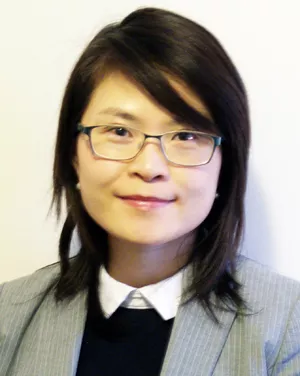
Accidental tourist
Professor Liye Xie’s detour to archaeology was a departure from her intended academic path, but she’s thrilled to have been so suitably rerouted.
“I was looking at the different programs offered at universities, and something caught my eye – it was Museumology, which was in the department of Archaeology,” says Xie, who at the time was contemplating her Bachelor’s program of study at Jilin University in China. “I didn’t really know what it was or whether it was what I wanted to do, but I went, and then I just fell in love with archaeology, totally betraying my Museumology program,” she laughs.
And it's been all about archaeology ever since. Xie went on to the grad school of the Chinese Academy of Social Sciences, and obtained a permanent research position at the Institute of Archaeology in Beijing upon graduation. She enjoyed her work at the Institute, but her curiosity about alternative ways of doing archaeology eventually culminated in the PhD program at the University of Arizona, specializing in ancient technology.
Currently Xie focuses on technological choices in relation to agricultural development, sedentary settlements and massive earthen constructions in two regions in China: the Lower Yangzi Basin and the Middle Yellow River Valley. In these two regions, she examines a variety of ancient implements including tools for harvesting, digging, land clearing and woodworking. Through studying the manufacture and functions of these tools, Xie tries to understand how effectively these tools solved the daily practical problems in the past, and how the acquisition, production and consumption of these tools affected the bigger economic and sociopolitical landscapes.
Xie’s research covers a wide span of time, from the Epipaleolithic period to the early Bronze Age, 15,000-3,500 years ago, and employs knowledge and equipment from an array of disciplines. For example, Xie uses modern-day technology in the form of industrial microscopes to scrutinize the surfaces of ancient tools, which can be made of materials ranging from stone, bone, shell or wood, and aims to determine the manufacturing techniques and the functions of the ancient tools. To understand the working context of the digging tools, Xie also analyzes the composition and properties of the ancient soils in which these digging tools were used.
Xie has an extensive research network in China that helps to complete the work that must be done abroad, and the study of ancient technologies provides her team a solid basis to understand the larger economic and sociopolitical landscapes in the past.
“In the last five years my research has shown that the costs of labor and implements for the construction of massive earthworks were substantial in the past, and we know that in ancient China, the construction of early urban settlements, usually made of earth, was a crucial step towards the establishment of complex political systems,” she says.
Xie has several ongoing projects, but says that once these wrap up, she has plans for future pursuits with a completely different line of inquiry to consider the technological traditions through cultural transmission, focusing on how people taught and learned the technologies, and how these teaching and learning processes affected the formation and changes in technological traditions over time.
“I have enough projects to last me well beyond retirement,” says Xie.
And she anticipates that many more projects will naturally present themselves while she conducts these current projects. Xie hopes that in the coming years undergraduate and graduate students, as well as postdoctoral fellows join her in research. “I always found myself happier and more productive working with colleagues and students.”
